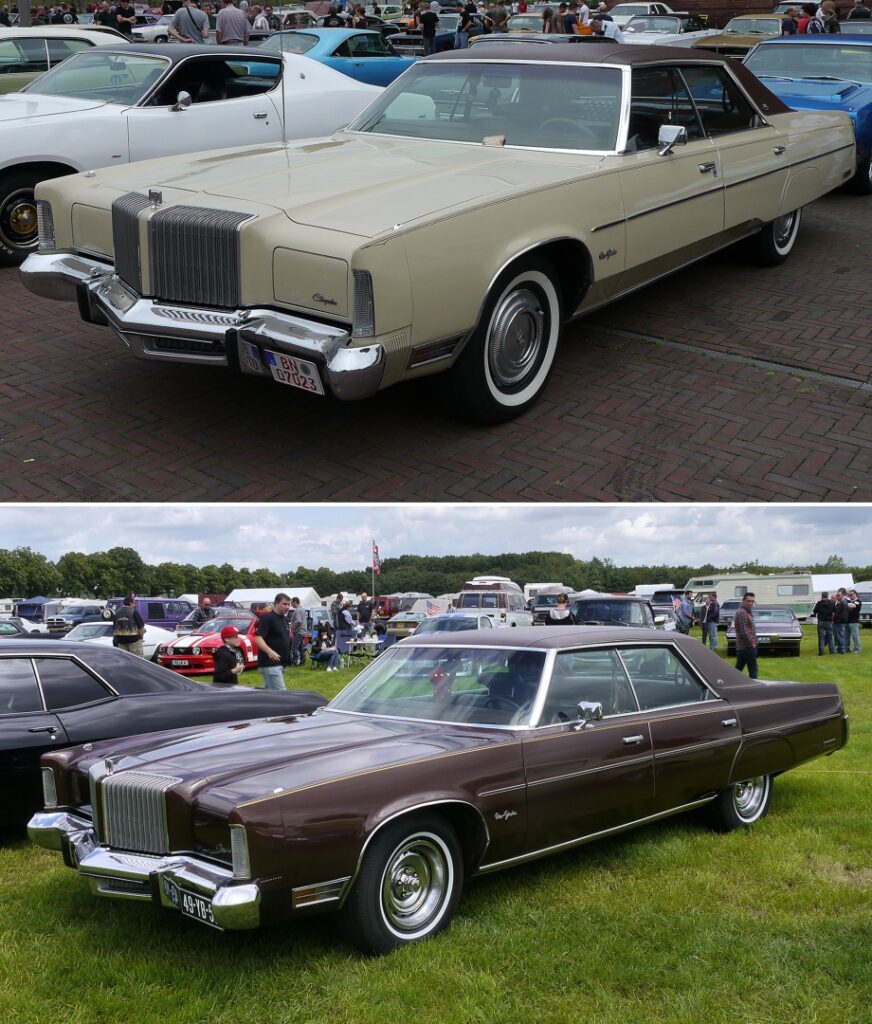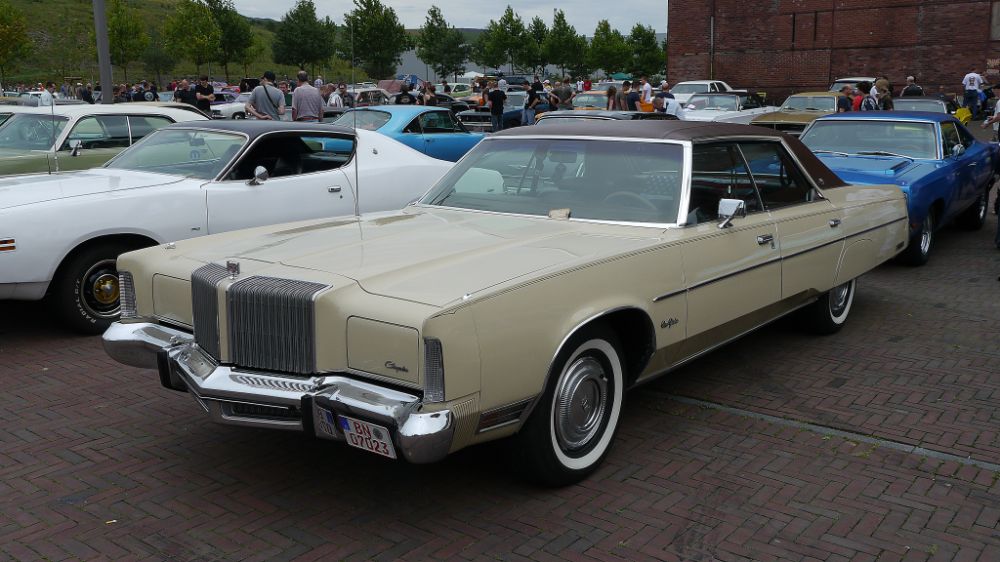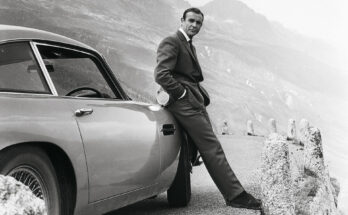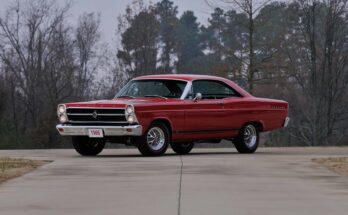Let’s hop into the velvet-lined time machine and cruise back to the mid-1970s, where the 1976 and 1977 Chrysler New Yorker Brougham ruled the road like a disco ball on wheels. This wasn’t just a car—it was a rolling slice of American swagger, born in an era of bell-bottoms, gas lines, and the tail end of Detroit’s obsession with “bigger is better.” The story of the New Yorker Brougham is one of luxury, ambition, and a touch of irony, as Chrysler tried to keep the party going while the world around it was changing faster than a Saturday Night Fever dance move. Buckle up, because this land yacht’s tale is as plush as its Corinthian leather seats.

The Birth of a Legend: Chrysler’s Big Bet
By 1976, Chrysler was in a weird spot. The oil crisis of ’73 had folks clutching their wallets at gas pumps, and smaller, fuel-sipping imports were nibbling at Detroit’s market share. Yet Chrysler, ever the contrarian, doubled down on what they did best: building massive, luxurious cars that screamed “I’ve made it!” The New Yorker Brougham was the crown jewel of their full-size C-body lineup, stepping into the spotlight after the Imperial brand got the axe in 1975. Think of it as the Imperial’s spiritual successor, inheriting all the prestige but with a Chrysler badge to keep it (slightly) more affordable.Introduced for the 1976 model year, the Brougham was the top-tier trim of the New Yorker, offered as a two-door hardtop or four-door sedan. It was priced at around $6,641 for the coupe and $6,737 for the sedan in ’76, creeping up to $7,090 and $7,215 in ’77. That was a steal compared to a Cadillac Fleetwood, but still enough to make you feel like a Wall Street tycoon. Chrysler sold 19,732 coupes and 56,610 sedans in ’77 alone, proving Americans still had a soft spot for excess, even with gas at 65 cents a gallon.

Styling That Turned Heads
The New Yorker Brougham was a looker, no question. It stretched 231 inches long—nearly 20 feet!—and weighed in at a hefty 4,800-5,000 pounds. Its front end was pure drama: a chrome waterfall grille, hidden headlights that popped up like a Broadway star, and a hood ornament with Chrysler’s lion emblem, giving it an aristocratic vibe. The sleek, slab-sided body had just enough curves to keep things classy, and the vinyl roof (standard on Broughams) was the automotive equivalent of a leisure suit—gaudy but oh-so-cool. You could get it in colors like Spinnaker White, Sable Tan, or the appropriately named Starlight Blue, perfect for cruising under a neon-lit skyline.Inside, it was a palace. The seats, draped in optional Corinthian leather or plush velour, were comfier than your grandma’s recliner. The “loose-pillow” design, with tufted upholstery and fold-down armrests, made you feel like you were lounging in a penthouse. Woodgrain trim, power windows, locks, and seats, plus Chrysler’s Auto-Temp II climate control, kept things posh. The AM/FM stereo with 8-track player was your ticket to blasting ABBA or Fleetwood Mac, and the optional Chronometer clock added a dash of sci-fi flair. Rear passengers even got a padded C-pillar “pillow” to lean against—because why should the front seats have all the fun?
Power and Performance: Big V8s, Big Dreams
Under the hood, the Brougham was all about V8 muscle, even if the Malaise Era’s emissions rules had dulled the edge. In ’76, you got a 400-cubic-inch (6.6L) V8 with 175 horsepower, but by ’77, Chrysler upped the ante with a standard 440-cubic-inch (7.2L) V8, cranking out 195 horsepower and 320 lb-ft of torque. Paired with a three-speed TorqueFlite automatic, it could move this 5,000-pound beast with surprising gusto, hitting 0-60 mph in about 10 seconds—not bad for a living room on wheels. The ’77 models came with Chrysler’s Lean Burn system, a primitive computer meant to boost efficiency, but it was glitchy and often left owners cursing at repair shops.The ride was pure magic, thanks to Chrysler’s torsion bar front suspension and an optional self-leveling air suspension in ’77. It floated over bumps like a yacht on calm waters, though cornering was more “gentle sway” than “sporty carve.” Fuel economy? A dismal 10-12 mpg, but if you were driving a Brougham, you didn’t care about gas receipts—you cared about arriving in style.
The Cultural Moment: A Car Out of Time
The New Yorker Brougham was a product of its era, but it was also a rebel. While Ford and GM were starting to downsize, Chrysler leaned hard into the traditional full-size formula. This was a car for folks who wanted to feel like they were starring in their own movie—think a middle-aged exec pulling up to a steakhouse or a family road-tripping to Vegas. Owners loved it: one guy on a classic car forum bragged about driving a similar ’75 Imperial from Richmond to Fort Lauderdale at 95 mph, arriving fresher than his polyester suit.But the writing was on the wall. The second oil crisis in ’79 and stricter regulations forced Chrysler to rethink big cars. By 1978, the New Yorker Brougham was redesigned into a boxier, less flamboyant version, and the C-body platform was phased out by ’81. The ’76-’77 models were the last gasp of Chrysler’s unapologetic land-yacht era, a middle finger to fuel economy and a love letter to American luxury.
The Karma Connection
Now, imagine Speedy McSpeedface from that reckless driver story trying to outrun a cop in a ’77 New Yorker Brougham. Picture it: he’s weaving through traffic, chrome gleaming, V8 roaring, thinking he’s untouchable. But that 5,000-pound beast isn’t built for Fast and Furious stunts—it’s built for cruising. One sharp turn, a clipped guardrail, and boom, Officer Karma’s flashing lights are in the rearview. The Brougham gets impounded, Speedy gets a ticket thicker than the car’s owner’s manual, and the universe chuckles. Moral of the story? Even the king of the road can’t outrun instant karma.
Legacy of the Brougham
Today, the ’76-’77 New Yorker Brougham is a collector’s gem, prized for its over-the-top style and nostalgic charm. Restored models fetch $15,000-$30,000, depending on condition, and they’re a hit at car shows, where they stand out like a disco ball in a sea of modern SUVs. They’re a reminder of a time when cars were more than transportation—they were personalities. The Brougham didn’t just carry you; it announced you. And in a world increasingly filled with Waymo’s robotaxis, there’s something gloriously human about that.


